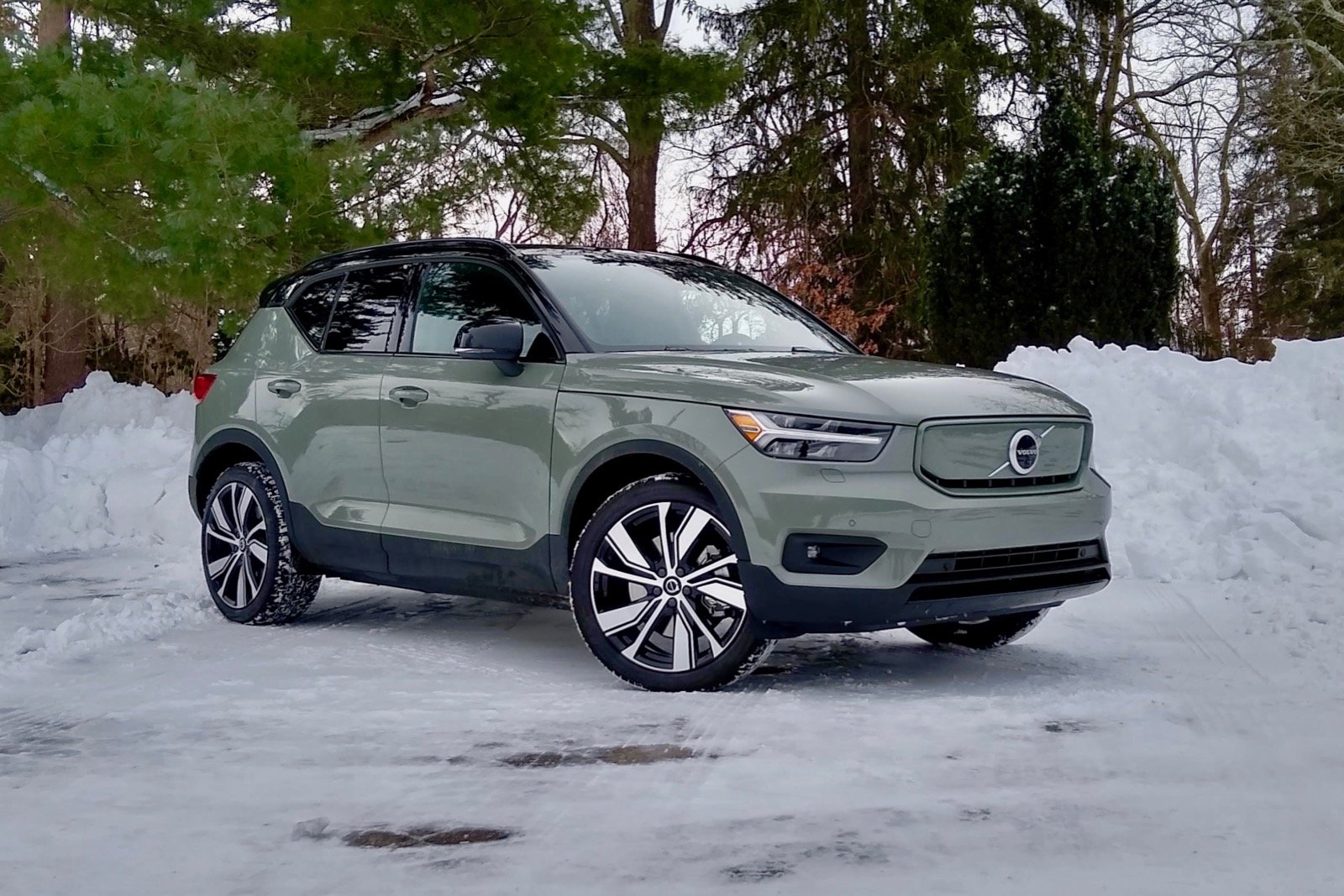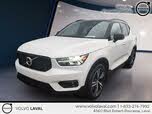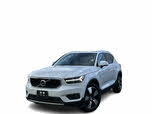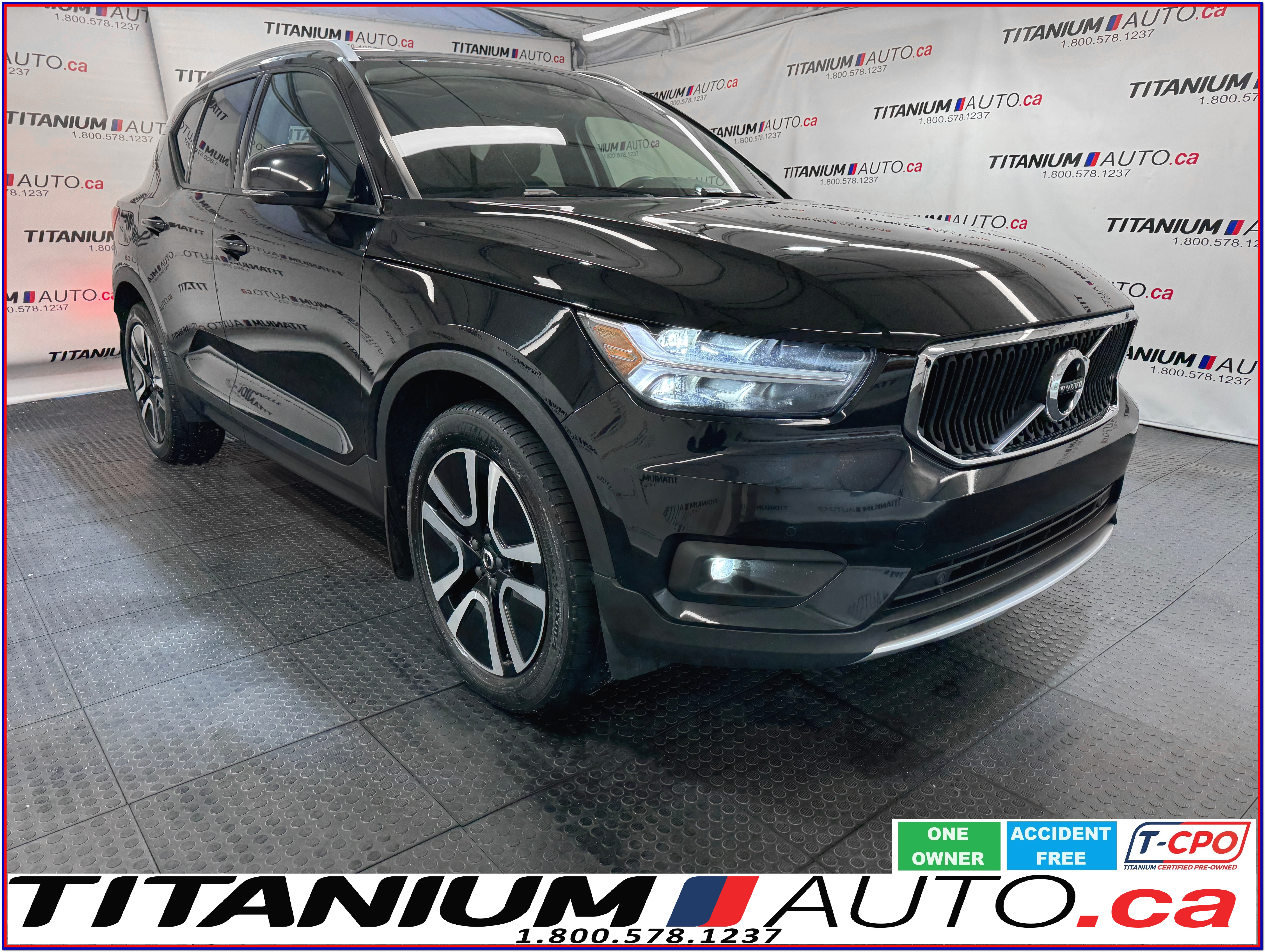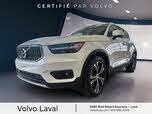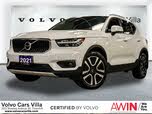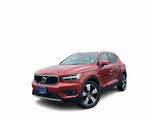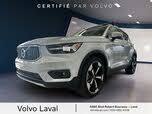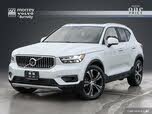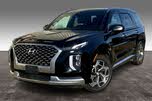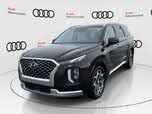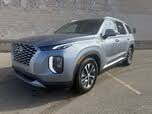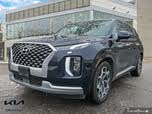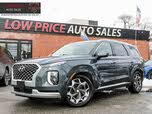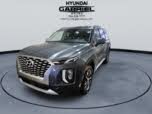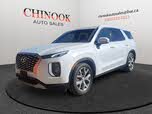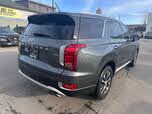2021 Volvo XC40 vs 2021 Hyundai Palisade
Overview | ||
MSRP | $33,700 | $32,675 |
Average price | $33,798 | $34,586 |
Listings | ||
Ratings & Reviews | ||
User reviews | ||
Expert reviews | 8.0 out of 10Read full review | 9.0 out of 10Read full review |
Pros & cons | ||
Summary | Introduced for the 2019 model year, the Volvo XC40 enters 2021 with one major change—the addition of an all-electric powertrain option. The 2021 Volvo XC40 Recharge is the Scandinavian automaker’s first mass-market pure electric vehicle, in fact. The Recharge will be sold alongside gasoline versions of the XC40, which carry over largely unchanged, and compete against small luxury crossovers like the Audi Q3, BMW X1, Mercedes-Benz GLA-Class, and Lexus UX. With its electric powertrain, the Recharge is a de facto Tesla Model Y competitor. It’s also priced similar to high-end versions of the Ford Mustang Mach-E, although the two electric crossovers have somewhat different philosophies. In addition to that zero-emission powertrain, the Recharge gets an Android-based operating system, over-the-air (OTA) software update capability for all vehicle systems, and some updates to driver-assist tech. These changes don’t apply to gasoline 2021 XC40 models, but Volvo does plan to add the Android operating system to more vehicles in the future. Since the Recharge is the main new thing for the 2021 XC40, that’s what we focused on for this review. While the gasoline XC40 is available in three trim levels—Momentum, R-Design, and Inscription—with standard all-wheel drive (AWD) in Canada, the Recharge is only offered in a single trim level. | Critically acclaimed and selling well, the 2021 Hyundai Palisade enters its sophomore year with more standard equipment, expanded infotainment capabilities, and a new luxury-themed trim level. The 2021 Palisade lineup includes Essential, Preferred, Luxury, and the new Ultimate Calligraphy trim, with pricing ranging from an MSRP of $41,399 to $54,899 Canadian—not including a destination charge of $1,925. For this review, we evaluated a Palisade Ultimate Calligraphy, which is priced at the top end of that spectrum. |
Video | No video found | |
Popular Features & Specs | ||
Engine | 2.0L 187 hp I4 | 3.8L 291 hp V6 |
Drive Train | FWD | FWD |
Seating Capacity | 5 | 8 |
Horsepower | 187 hp @ 4700 rpm | 291 hp @ 6000 rpm |
MPG City | 23 | 19 |
MPG Highway | 32 | 26 |
Engine | ||
Engine Name | 2.0L 187 hp I4 | 3.8L 291 hp V6 |
Torque | 221 lb-ft @ 1400 rpm | 262 lb-ft @ 5000 rpm |
Horsepower | 187 hp @ 4700 rpm | 291 hp @ 6000 rpm |
Drivetrain | FWD | FWD |
Fuel Economy | ||
MPG City | 23 | 19 |
MPG Highway | 32 | 26 |
Interior | ||
Leather Seats | Standard | |
Seating Capacity | 5 | 8 |
Safety | ||
Front Crash Overall | 5 | 5 |
Side Crash Overall | 5 | 5 |
Dimensions & Capacity | ||
Cargo Space | 20.7 cu ft | 18.0 cu ft |
Curb Weight | 3627 lbs | 4127 lbs |
Height | 65.3 in | 68.9 in |
Length | 174.2 in | 196.1 in |
Width | 80.1 in | 77.8 in |
Wheelbase | 106.4 in | 114.2 in |
Maximum Payload | 1133 lbs | 1605 lbs |
Number of doors | 4 | 4 |
Maximum Towing Capacity | 3500 lbs | 5000 lbs |
The 2021 Volvo XC40 presented a more traditional SUV aesthetic compared to other small luxury crossovers, featuring a tall, flat roof and an upright rear hatch. It seamlessly integrated with the rest of the Volvo lineup, showcasing signature design elements like the “Thor’s Hammer” LED headlights and a simple oval grille. Gasoline models offered a white contrasting roof for a retro touch. The XC40 Recharge differentiated itself with a blanked-off grille, subtle “Recharge” badging, and unique alloy wheels, alongside a gloss black roof and mirror caps. Despite these distinctions, the Recharge maintained a low-key appearance, appealing to electric-car drivers who preferred not to stand out. Inside, the XC40 boasted a minimalist design with high-quality materials, including real metal trim and a combination of Nappa leather and Nubuck textile upholstery. The interior design was cohesive, with elements like the portrait-oriented touchscreen and air vents blending harmoniously, offering a premium feel uncommon in this segment.
The 2021 Hyundai Palisade, particularly in the Ultimate Calligraphy trim, stood out with its distinctive grille pattern, revised exterior lighting, and unique 20-inch alloy wheels. It exuded a sense of luxury, drawing attention with its unconventional styling. Opinions on its design varied, but the Palisade Ultimate Calligraphy undeniably appeared more expensive than its price suggested. Inside, the Palisade impressed with quilted and stitched premium Nappa leather and a simulated suede headliner, offering a cabin that felt like a genuine bargain. The interior was spacious and comfortable, with thoughtful details enhancing the overall experience. The Palisade’s design and materials elevated it above many competitors in the midsize three-row SUV class, providing a plush and inviting environment for passengers.
The 2021 Volvo XC40 offered a diverse powertrain lineup, with the electric Recharge model at the top. The gasoline options included a 2.0-litre turbocharged four-cylinder engine paired with an eight-speed automatic transmission. The base T4 variant delivered 187 horsepower and 221 pound-feet of torque, while the T5 variant increased output to 248 hp and 258 lb-ft. The Recharge model shared its powertrain with the Polestar 2, featuring dual electric motors for all-wheel drive and a combined 402 hp and 486 lb-ft of torque. It utilized a 78-kilowatt-hour battery pack, with 75 kWh of usable capacity, enabling a 0 to 100 km/h acceleration in 4.9 seconds. The T5 and T4 models achieved 0 to 100 km/h in 6.4 and 8.5 seconds, respectively. All versions were electronically limited to 180 km/h. The XC40 Recharge emphasized luxury and comfort, offering excellent ride quality even on challenging roads. It also supported one-pedal driving, enhancing the electric driving experience. Notably, the Recharge model had a towing capacity of 900 kilograms (2,000 pounds).
The 2021 Hyundai Palisade came equipped with a robust 3.8-litre V6 engine producing 291 horsepower, paired with an 8-speed automatic transmission and standard all-wheel drive in Canada. Drivers could select from various driving modes, including Eco, Comfort, Smart, and Sport, along with a Snow mode and a Lock function for improved traction. The Palisade achieved a fuel efficiency of 11.1 litres per 100 kilometres in combined driving. Its suspension tuning provided excellent body-motion control, offering a firmer feel akin to a traditional SUV without compromising comfort. The Palisade excelled in typical driving scenarios, delivering ample power and ease of operation in urban and suburban environments. It also featured a towing capacity of 2,268 kilograms (5,000 pounds), with a new seven-pin trailer pre-wiring connector for 2021.
The 2021 Volvo XC40, both in its Recharge and gasoline variants, offered no difference in passenger or cargo space. However, it was not particularly spacious, with less legroom and headroom compared to competitors like the Tesla Model Y and Ford Mustang Mach-E. The cargo area was also smaller, and the frunk was limited due to powertrain hardware. Despite these limitations, the gasoline XC40 was more competitive in interior space compared to rivals like the Audi Q3 and BMW X1. Volvo compensated with clever storage solutions, such as a removable trash bin in the centre console and a bag hook in the glovebox door. The Harman Kardon audio system’s speakers were moved to the dashboard, allowing for larger door bins. A wireless charging pad was optional, and a single USB-C port was standard, though second-row occupants lacked phone-charging options.
The 2021 Hyundai Palisade excelled in interior space, seating, and accessibility, making it nearly perfect for a midsize three-row SUV. In the Ultimate Calligraphy trim, it offered a luxurious experience with eight-way power-adjustable front seats, heated and ventilated front and second-row seats, and separate climate controls for third-row passengers. The seats provided good support for long drives, and the second-row captain’s chairs offered ample legroom and adjustability. Access to the third-row seat was convenient, with a decent pass-through created by tilting and sliding the captain’s chairs. The Palisade’s third-row seat was more accommodating than most in its class. It also provided generous in-cabin storage, with a storage tray under the centre console. Cargo space measured 509 litres behind the third-row seats, expanding to 1,297 litres with the seats folded down, and 2,447 litres with the second-row seats folded. The hands-free Smart Liftgate added convenience, automatically opening when the key fob was detected.
The 2021 Volvo XC40 Recharge featured the Android Automotive OS infotainment system, offering Google apps like Google Assistant and Google Maps. Gasoline models retained the previous system. The setup included a 9-inch touchscreen and a 12.3-inch digital instrument cluster, with top-notch graphics and menu layouts. The Recharge model supported OTA updates for the infotainment system and other vehicle functions. It also lacked a start button, allowing drivers to shift out of park with the key fob present. The Polestar 2’s Digital Key feature was expected in a future update, but not confirmed for the XC40.
The 2021 Hyundai Palisade offered two infotainment systems, with 8-inch and 10.25-inch touchscreen displays. Both allowed pairing of two smartphones to Bluetooth simultaneously, but only the 8-inch setup supported wireless Apple CarPlay and Android Auto. The Ultimate Calligraphy trim included features like SiriusXM satellite radio, HD Radio, navigation, Blue Link connected services, and a 12-speaker Harman Kardon audio system. Additional technology included wireless smartphone charging, a Driver Talk intercom system, Quiet Mode, and an available head-up display. A surround-view camera system aided parking and maneuvering.
The 2021 Volvo XC40 gasoline model received the highest “Top Safety Pick+” rating from the IIHS and a five-star overall crash-test rating from the NHTSA. The electric XC40 Recharge was expected to perform well in crash tests due to its safety cage around the battery and redesigned front crash structure. Standard safety features included lane-keep assist, blind-spot monitoring, automatic emergency braking, and more. The Recharge model featured Volvo’s latest sensor suite, scalable for future driver aids.
The 2021 Hyundai Palisade excelled in safety, with features like adaptive cruise control, forward-collision warning, automatic emergency braking, and lane-keeping systems. A rear occupant alert system and Safe Exit Assist were also included. The Palisade’s Highway Driving Assist provided excellent adaptive cruise control and lane-centring assistance. It earned top safety ratings from the IIHS and NHTSA, ensuring protection in the event of a collision.
CarGurus highlights

According to CarGurus experts, the overall rating for the 2021 Volvo XC40 is 8.0 out of 10, while the 2021 Hyundai Palisade scores 9.0 out of 10. Based on these ratings, the Hyundai Palisade is the recommended choice, offering superior space, luxury, and safety features, making it an excellent option for families seeking a reliable and comfortable SUV.
Choose the 2021 Volvo XC40 if:
Shop Now- You prefer a luxury SUV with a minimalist and high-quality interior design.
- You value advanced technology features like Android Automotive OS and OTA updates.
- You seek a vehicle with a strong emphasis on safety and a high safety rating.
Choose the 2021 Hyundai Palisade if:
Shop Now- You need a spacious and comfortable midsize SUV with three rows of seating.
- You appreciate a luxurious interior with premium materials and thoughtful details.
- You prioritize safety features and top safety ratings for family protection.

By: CarGurus + AI
At CarGurus, our team of experienced automotive writers remain at the heart of our content operation, conducting hands-on car tests and writing insightful guides that are backed by years of industry experience. To complement this, we are harnessing AI to make our content offering more diverse and more helpful to shoppers than ever. To achieve this, our AI systems are based exclusively on CarGurus content, ratings and data, so that what we produce is both unique to CarGurus, and uniquely helpful to car shoppers.
